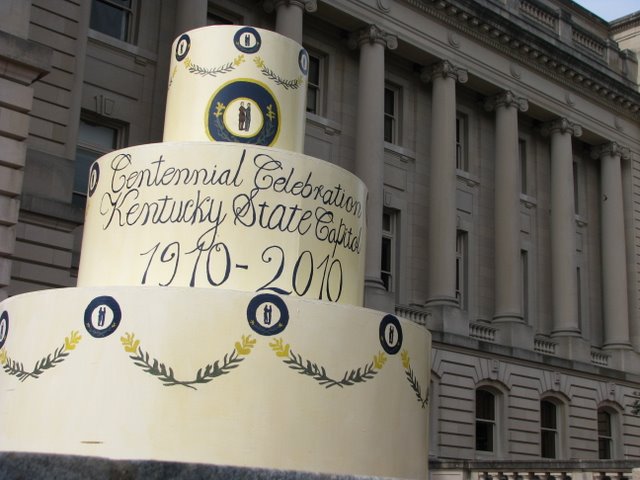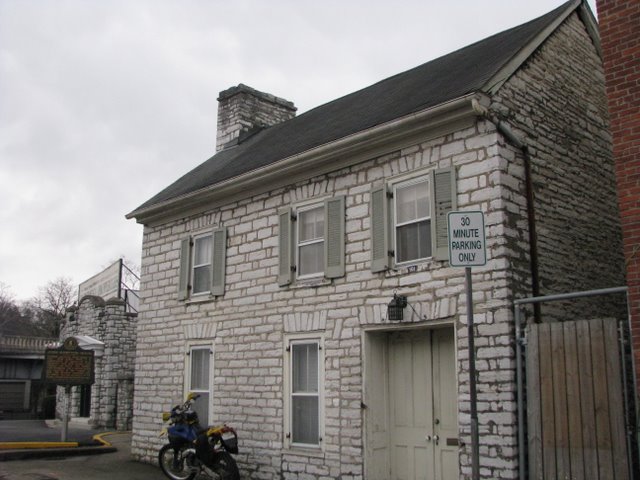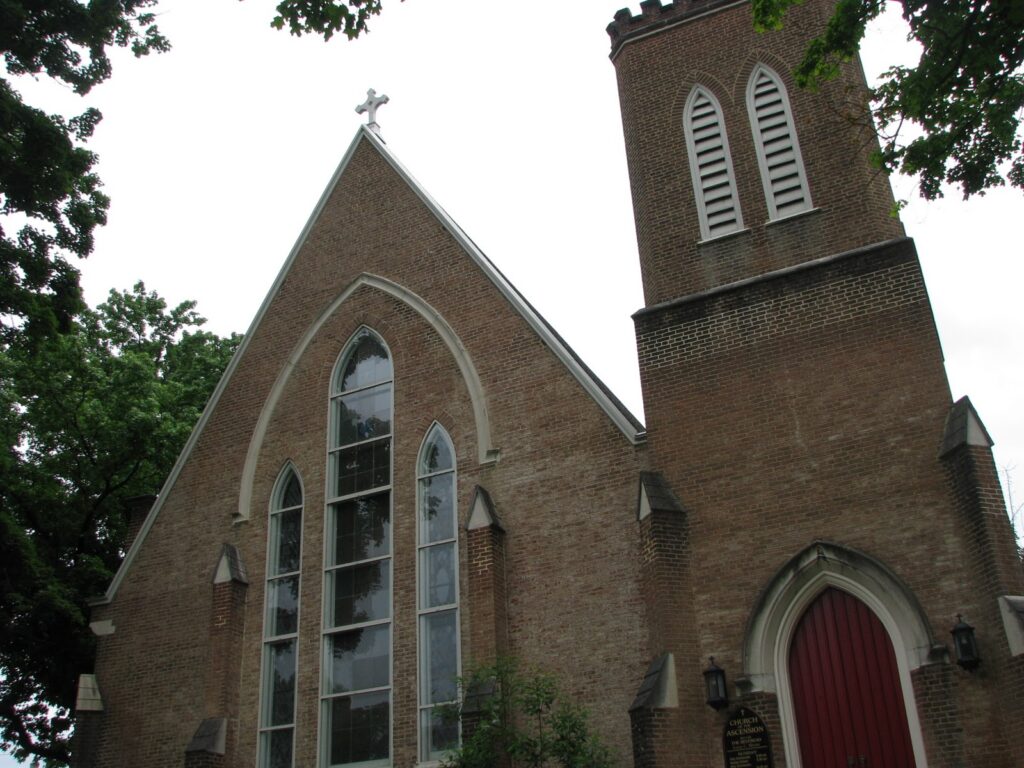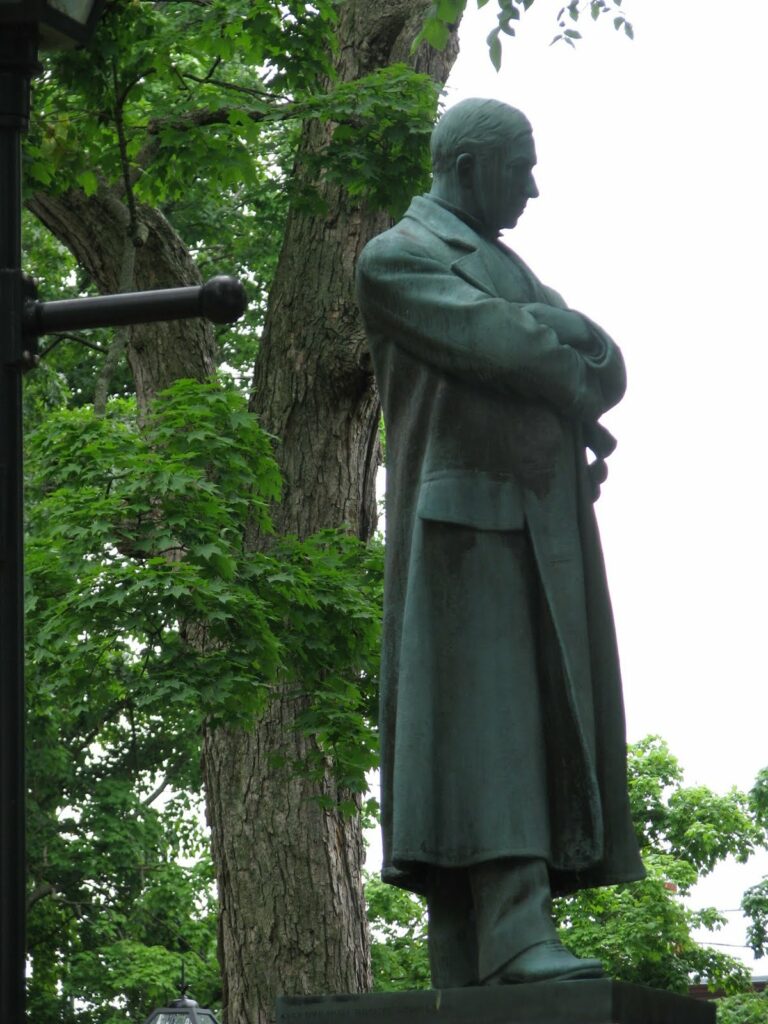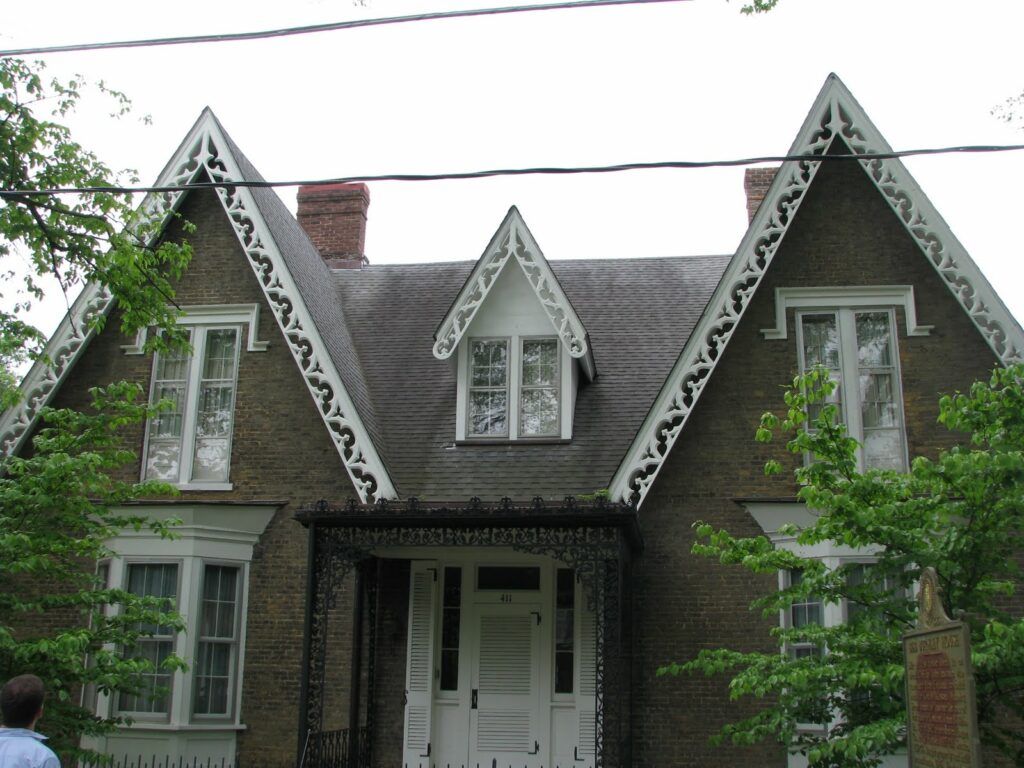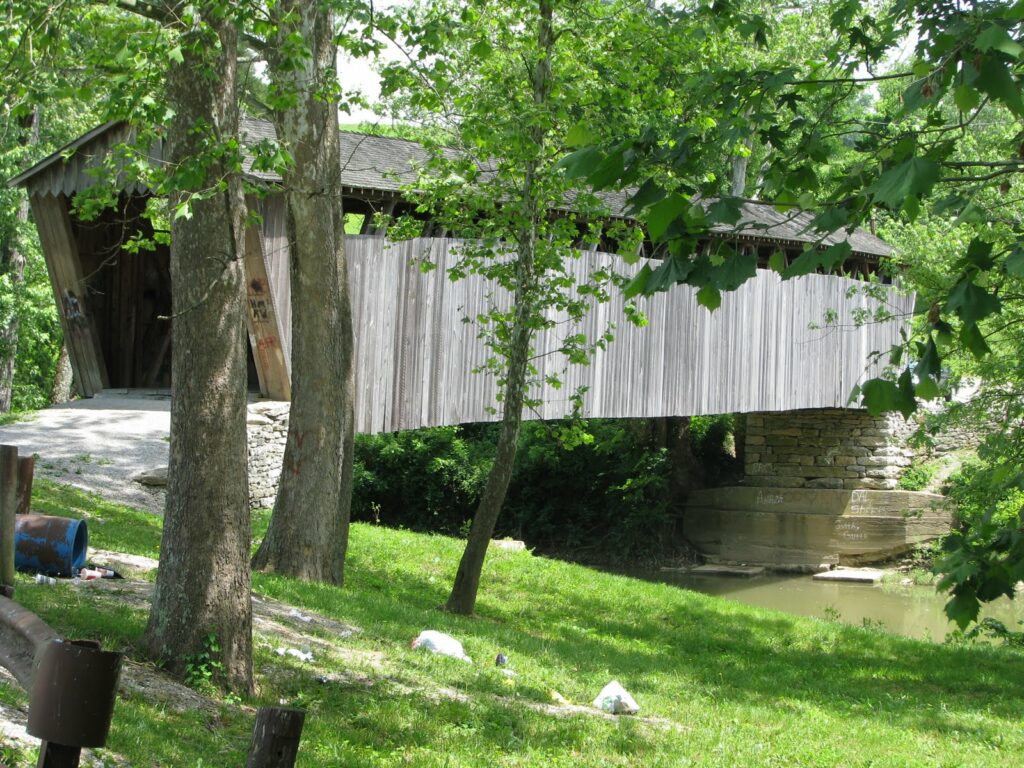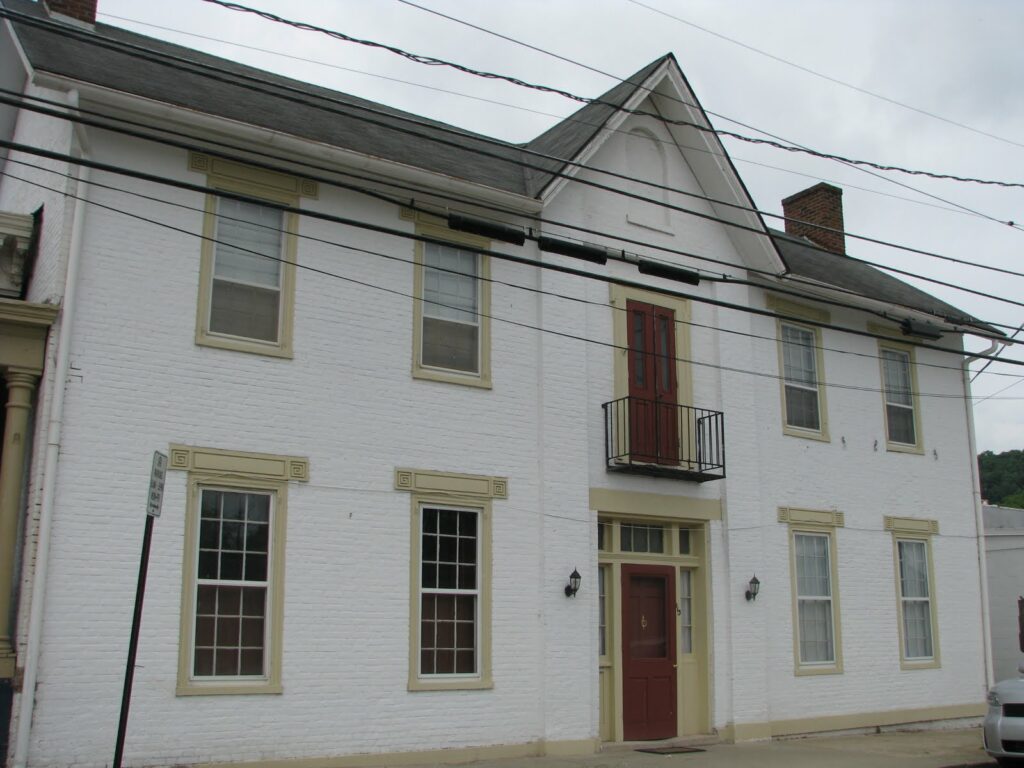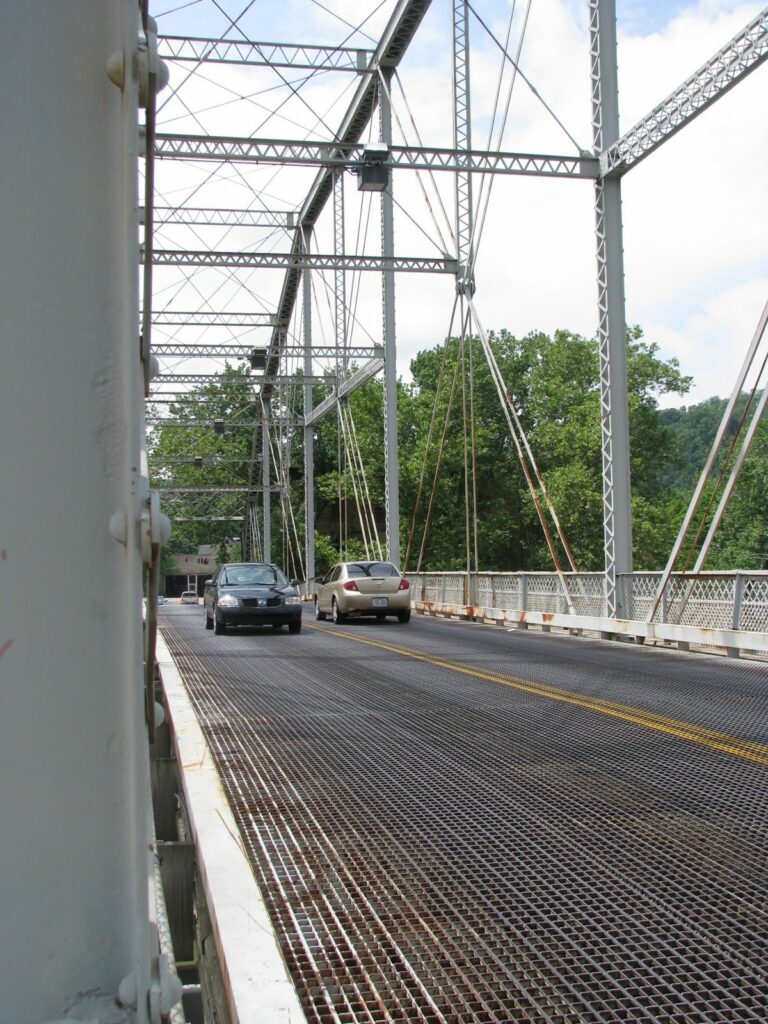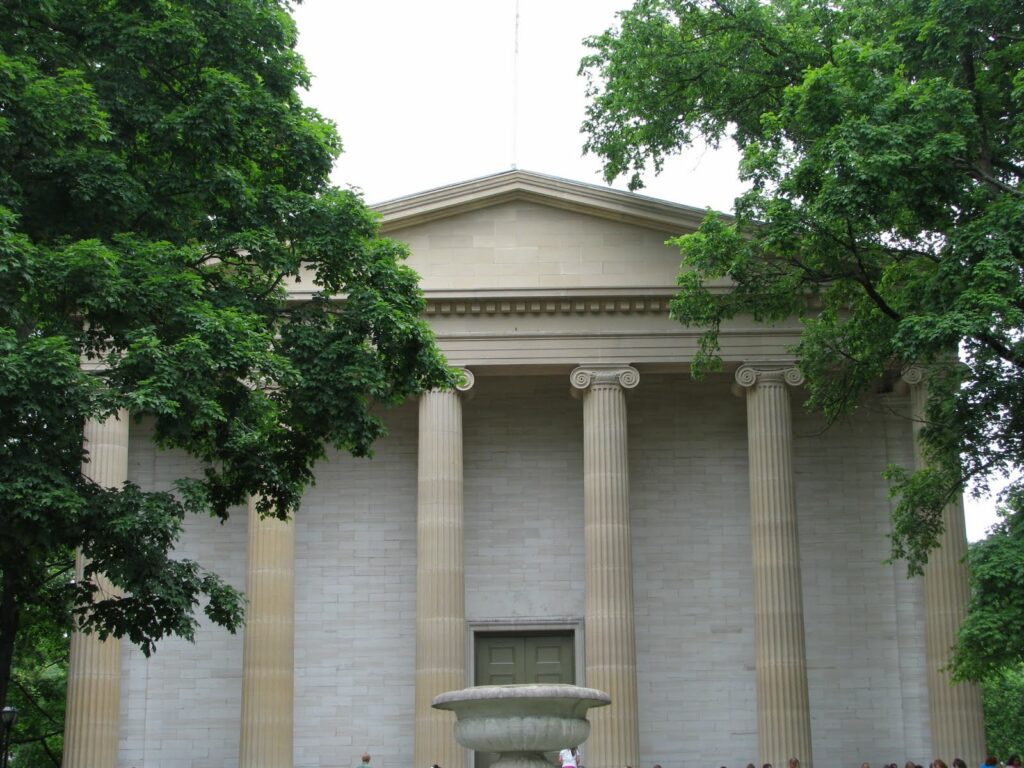I’ve been excited since First Lady Jane Beshear announced that the murals were coming to the Capitol. Part of the Capitol’s original design, plans were set aside after artist Frank Millet (a friend of then-Gov. August E. Willson) died on the maiden voyage of the Titanic. One hundred years later, the Capitol finally has its murals! This is the first of four posts about the murals.
 |
| Mural “Nature” in the Capitol, Frankfort |
The first mural represents Nature and the bounty of the land. In the foreground is Ceres, the Roman goddess of agricultural prosperity. Kentucky’s signature industry – the horse – also appears in the foreground. In the background you can see the twin spires of Churchill Downs, as well as the limestone fences, barns and fields of harvest for which Kentucky’s bluegrass is so well known.
These murals are grand and a fine addition to the Capitol. So many emphasize the characters depicted in the foreground that they ignore the detail in the background.

